Honor Award
Productive Neighborhoods: A Case Study Based Exploration of Seattle Urban Agriculture Projects
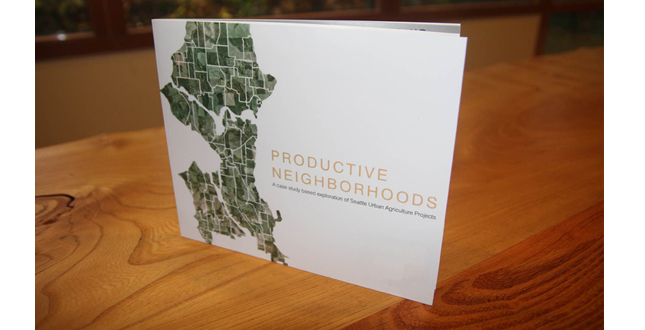 Close Me!
Close Me!Our report records the current state of urban agriculture in Seattle, offers strategies for successful practices that translate into viable business models and offers resources that contribute to the growth of the local food movement.
Download Hi-Res ImageImage: Berger Partnership
Image 1 of 15
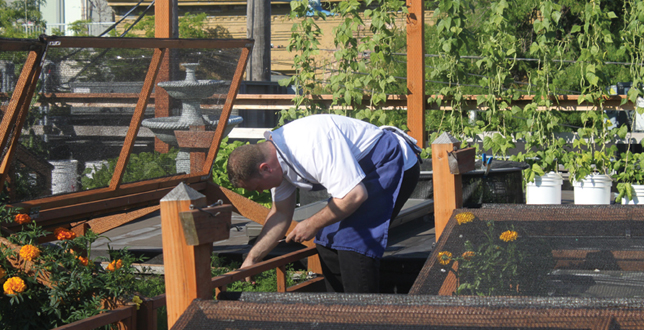 Close Me!
Close Me!Seattle is home to 103 urban food production sites. While the more common P-Patches and community gardens offer a multitude of community benefits, Seattle has few productive urban farms that have an impact on the local food supply.
Download Hi-Res ImageImage: Berger Partnership
Image 2 of 15
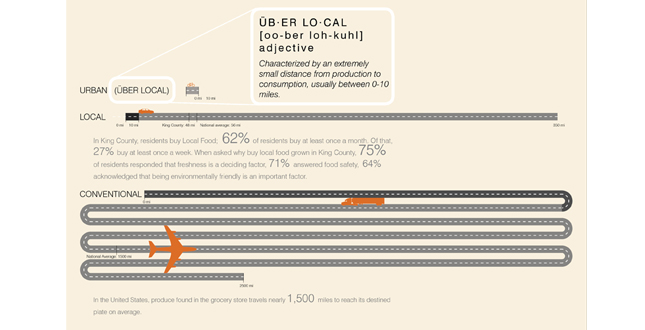 Close Me!
Close Me!Seeking to instigate a discussion about how to expand farming in Seattle, we began our approach by comparing the different food systems found within Seattle in the context of the distance food travels to reach the average American table.
Download Hi-Res ImageImage: Berger Partnership
Image 3 of 15
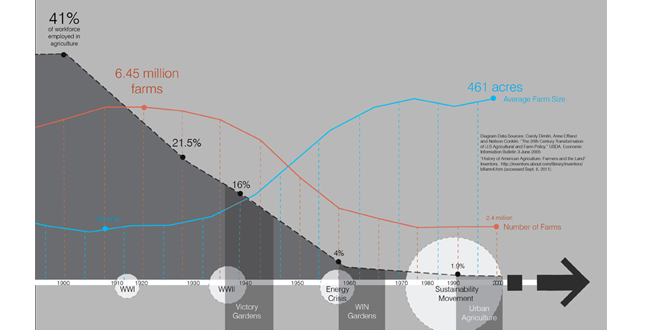 Close Me!
Close Me!Reviewing the history of urban agriculture and changes within farming practice over the past century we found urban agriculture surged in response to energy shortages. Perhaps the current sustainability movement will shape urban farming into a lasting food production model.
Download Hi-Res ImageImage: Berger Partnership
Image 4 of 15
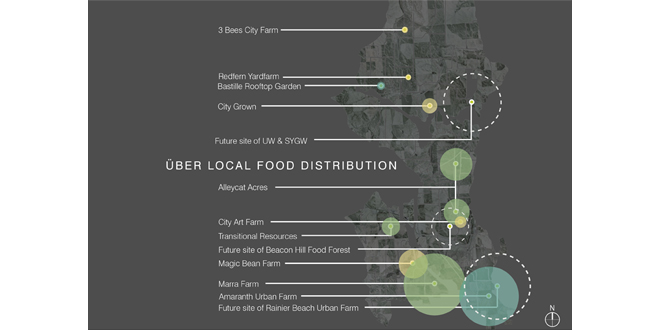 Close Me!
Close Me!Farms located in an urban area have the potential to make a large impact. If practiced on a larger scale within our neighborhoods, urban farming could shift our food production toward a balanced, localized and sustainable network.
Download Hi-Res ImageImage: Berger Partnership
Image 5 of 15
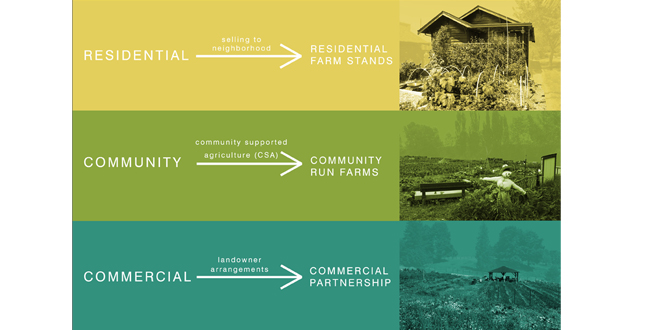 Close Me!
Close Me!In order to address the range of relationships between farmer and consumer, we delineated three distinct typologies of urban farms: residential, community and commercial. We observed trends in these typologies that are evolving to make urban farming more economically viable.
Download Hi-Res ImageImage: Berger Partnership
Image 6 of 15
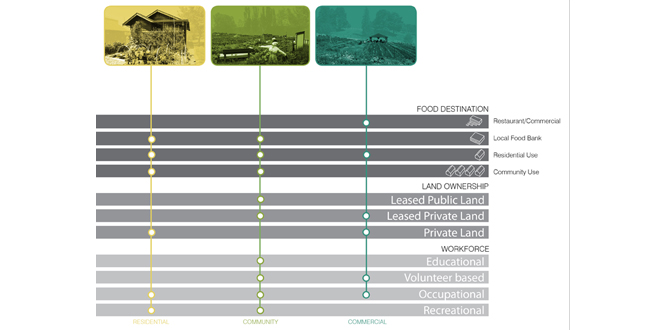 Close Me!
Close Me!We found that each farm typology has similar characteristics with regard to food destination, land ownership, and the type of workforce involved. These patterns prove to be insightful as we begin to identify new opportunities for farms on urban sites.
Download Hi-Res ImageImage: Berger Partnership
Image 7 of 15
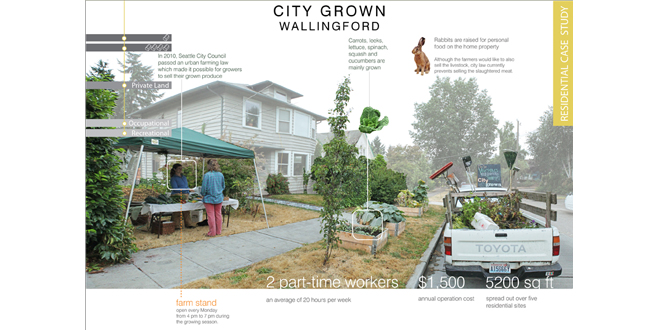 Close Me!
Close Me!Beginning with their backyard, Noelani Alexander and Scott Behmer created City Grown in 2010, a farming collective using residential sites to pool productive land. Within a year, four additional residents donated land in exchange for a share of the crop.
Download Hi-Res ImageImage: Berger Partnership
Image 8 of 15
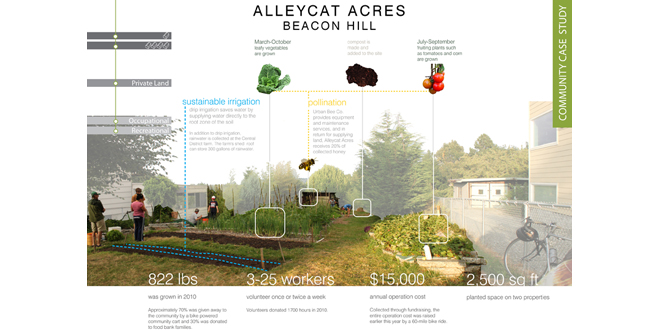 Close Me!
Close Me!Alleycat Acres is a nonprofit organization connecting communities with food production and biking. The organization’s biggest difficulty has been negotiating the length of land leases to balance initial investment cost with the years needed to achieve a viable harvest.
Download Hi-Res ImageImage: Berger Partnership
Image 9 of 15
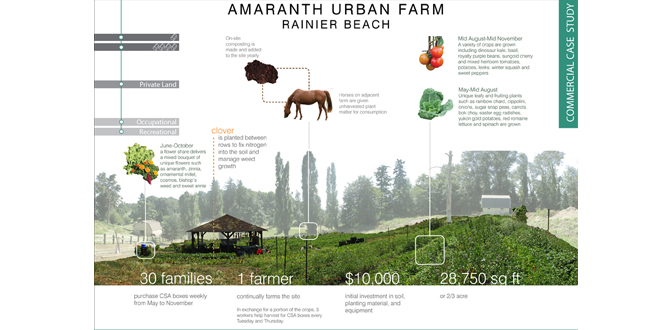 Close Me!
Close Me!Since 2002, Nicole Capizzi has been farming, teaching, and writing about sustainable agriculture. Even as an experienced farmer, finding urban land for commercial farming was difficult. After many months her efforts paid off and she began operating Amaranth Urban Farm.
Download Hi-Res ImageImage: Berger Partnership
Image 10 of 15
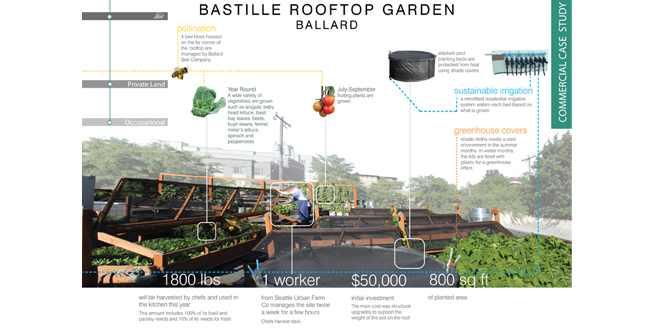 Close Me!
Close Me!As part of Bastille’s commitment to organic, sustainable agriculture, this Seattle restaurant commissioned the Seattle Urban Farm Company to design a year-round rooftop garden. Despite structural and heat gain/loss challenges, the rooftop farm has been successfully operating since 2009.
Download Hi-Res ImageImage: Berger Partnership
Image 11 of 15
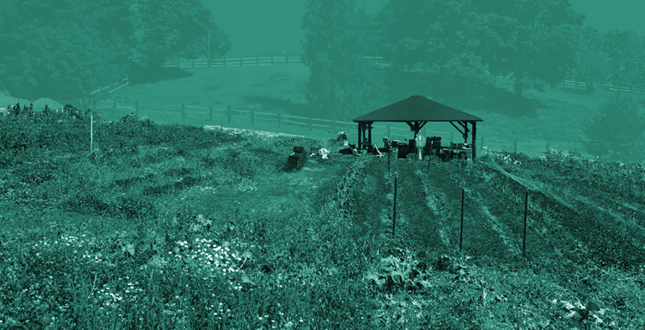 Close Me!
Close Me!To effect greater change within Seattle’s food system, urban farms must find creative ways to allow farmers to earn a profit. As designers we see opportunities in privately owned sites where the greatest flexibility lies in the leasing relationship.
Download Hi-Res ImageImage: Berger Partnership
Image 12 of 15
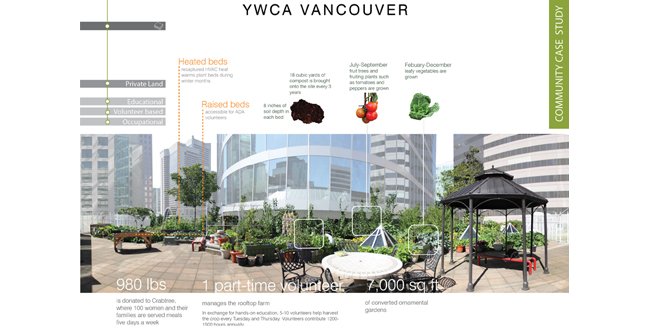 Close Me!
Close Me!In order to shift toward a balanced food system we could begin by using conventionally unleasable space for commercial urban farms to help bridge the gap between conventional urban rent costs and the cost of leasing agricultural land.
Download Hi-Res ImageImage: Berger Partnership
Image 13 of 15
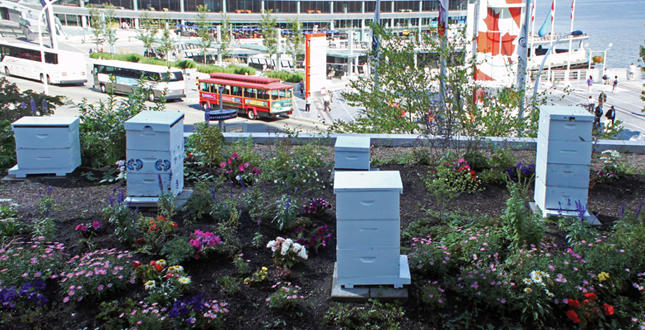 Close Me!
Close Me!Space-restricted properties can contribute with urban beekeeping, which helps to replenish honeybee colonies. Referred to as Colony Collapse Disorder, in the past few years there has been a substantial decline in managed honeybee colonies throughout the US.
Download Hi-Res ImageImage: Berger Partnership
Image 14 of 15
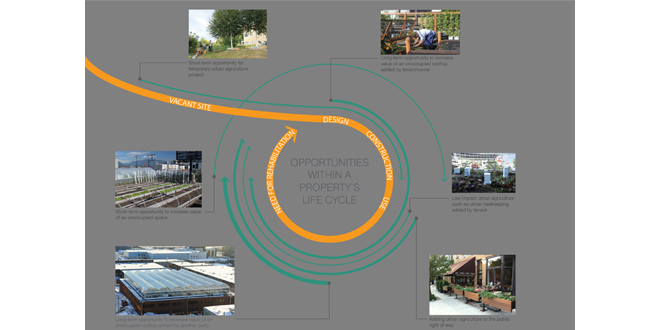 Close Me!
Close Me!Opportunities for productive land use exist during many stages of a property’s life cycle. From vacant land to developed sites, urban agriculture has potential to add environmental, economic and social value to traditionally undervalued spaces and create opportunities for farmers.
Download Hi-Res ImageImage: Berger Partnership, Uncommon Ground, and Lufa Farms
Image 15 of 15
Project Statement
Urban farming offers many community benefits. As designers we understand the value of urban farming but acknowledge there are complexities not yet understood for creating a successful commercial farm and an über local food source. This report looks at the current state of urban agriculture in Seattle, offers strategies for successful practices to be shared with city agencies, clients and the local farming community, and resources that contribute to strengthening the local food movement.
Project Narrative
—2012 Professional Awards Jury
This report is the result of a summer internship focused on understanding the state of urban agriculture in Seattle, Washington. The topic for the internship stemmed from a need to support a growing number of clients who have interest in urban agriculture as part of their projects. Historically, the summer internships research a topic about which the office would like more information but is unable to research in depth. The topic of urban agriculture stood out because of the large range of project types, disciplines and applications it engaged. The report embraces the idea of the collaborative design process, taking it to a new level by engaging the roles of the landowner and farmer as key players necessary to make this type of programming possible.
Urban farming offers a multitude of community benefits such as access to a healthy food source, educational value and a boost to the local economy. As these benefits are better understood, a growing number of clients have begun to ask about incorporating urban farming into their projects. As designers, we understand the value of urban farming for its environmental and social benefits, but acknowledge that there are complexities and hurdles not yet understood in creating a successful commercial urban farm. This report looks at the current state of urban agriculture in Seattle, offers strategies for successful practices that translate into viable business models and offers resources that contribute to the growth of the local food movement.
The report is built around case studies that explore existing urban farms in Seattle as well as regional and national sites, to better understand how urban farms function and the challenges that must be overcome to effect change. The research seeks to document and share the knowledge gained from each site and instigate a discussion among city agencies, urban farmers, developers, clients and local agriculture related organizations about how to expand urban farming in Seattle.
History
Urban agriculture movements such as Victory Gardens during WWII and Whip Inflation Now (WHIP) Gardens of the 1970s occurred in recent American history and were invariably linked to fuel and energy shortages.
A resurgence of the Victory Garden model is happening as part of the sustainability movement; 22% of American households had vegetable gardens in 20061. Within Seattle, the Mayor and City Council have supported several policies to improve the food system and promote a sustainable future, including the 2008 Local Food Action Initiative, declaring 2010 as the Year of Urban Agriculture, and passing a resolution for the Seattle Farm Bill Principles with the hope of influencing the upcoming national 2012 Farm Bill, a measure passed every five years in Congress that influences food policy in our country.
Learning from the past, urban agriculture movements can grow a substantial amount of healthy, nutritious food in urban areas. Past movements lost momentum after the cause of the movement disappeared. The current shift toward sustainability distinguishes this movement from others due to the increased understanding of the ramifications of inefficient use of fossil fuels and depleting resources. However, in order for urban agriculture to take hold as a lasting model for food production, it must transition into the commercial food supply system and become a competitive option.
Transportation
When looking at food production, it is impossible to ignore the implications that the transportation of food has on food cost and environmental degradation. Large-scale farming, whether conventional or organic, transports crops a long distance to reach the consumer. In addition, a large component of food price is determined by shipping, packaging and storage. In the growth of a local food system, the reduction of transportation costs can restructure agricultural profits to allow farmers to earn a better living wage and ultimately make urban farming a more viable option.
Destination Über
An über local food system, where food is grown and sold within a city’s limits, has many potential economic, social and environmental benefits in addition to providing fresh quality food products. As a result, there is a strong desire to have more urban farms in Seattle despite the limited number of places it occurs today.
While über local farming makes strides in shortening the distance for a crop to reach a consumer, it is important to recognize that, in terms of carbon footprint, the largest carbon hit is at the end of the distribution route. In other words, more energy is used getting a crop from the grocery store to the table than it takes to get a crop from the field to a store.
Through the growth of an über local food network, the reduction of conventional transportation costs can be transferred directly to the urban farmer to earn a living wage. In translating the location and scale of the case studies we examined onto a map of Seattle, we began to see a relationship between farm typologies and the neighborhoods in which they occur. This can serve as a tool to help identify areas where there are shortages in locally grown food. This map serves to highlight relationships with regard to housing density and farm types. In neighborhoods where housing is largely made up of single-family residences, there is a correlation with residential-scale farming. In more dense neighborhoods, the value of community and commercial farming is more apparent and can serve to help identify where development of these larger-scale farms would be most beneficial.
Case Studies
Through our research we learned that urban farms are often described and defined by their role in growing and selling crops within the city limits. However, this definition does not disclose the wide range of relationships between food destination, land ownership and workforce management. In order to document and understand these variances, we divided the case studies into three distinct typologies: residential, community and commercial. For each typology researched a number of factors including the annual crops produced in pounds of food, how crops are distributed, startup cost and funding resources, total square footage of land, number of workers and the estimated time it takes to farm the site.
The three residential case studies begin with a look at City Grown Farms, a backyard farm composed of five residential sites that total 5,200 sq. ft. Produce is sold at a farm stand in the owner’s front yard. The subsequent case studies include an empty residential lot that produces CSA boxes for members in the surrounding neighborhood as well as a residential farm that offers after-school art and farming as part of its curriculum. Each site offers unique ideas for crop sharing, soil maintenance and crop selection. Most importantly, the residential farms highlight the limitations of farming land that is an irregular shape or a group of properties that are far apart. Farming gains great efficiencies when land is a large rectangular shape. Efforts to make farming of residential properties a viable commercial effort are greatly hindered by these issues of adapting to irregular shaped land and trying to group a collection of sites into a single venture.
Community case studies, for which there were four, range in size from 2,000 sq. ft. to 43,000 sq. ft. and grow produce for food banks, CSAs and educational purposes. Food production ranges from 822 lbs. to 22,000 lbs. and land ownership is both leased public and private. The challenges faced by this typology include maintaining an affordable workforce, management of volunteers and lease limitations. This section ends with a look at the very successful YWCA rooftop garden in Vancouver with a goal of donating one ton of produce this year. While community farms often have the land configurations to be an efficiently working farm, they are plagued by the absence of business models and the need to adapt to benefit the needs of the communities they are serving.
Two commercial case studies brought into focus the possibilities and the challenges faced by urban farmers hoping to earn a profit from their farms. These sites ranged in size from a local restaurant that grows greens on its rooftop to a 28,000 sq. ft. farm that supplies CSA boxes to 30 families. These sites emphasize the need for creative solutions to reduce the cost of land for an urban farmer so that profit margins can be maximized. Additionally, they confirmed the great demand for über locally produced food and the reality that consumers will pay a premium for that food.
The report then documents several urban agriculture projects that utilize unconventionally leased land such as the rooftop farm Brooklyn Grange, in New York, which grows produce nine months of the year, and Lufa Farms, in Montreal, which provides 25 varieties of vegetables year round.
Opportunities for Future Projects
We found that both residential and community farming are widely practiced in Seattle, but commercial farming forces the farmer to chart a new path in creating a workable model for a productive farm. The city is home to 103 urban food production sites, which include urban farms, P-Patches, community gardens and school gardens. While P-Patches, community gardens and school gardens are important components of Seattle’s food system, Seattle has few productive urban farms. If practiced on a larger scale within our neighborhoods, productive urban farms have the greatest potential to make an impact on the local food supply and could shift our food production toward a balanced, localized and sustainable network.
The urban farmers we met in Seattle are individuals with an entrepreneurial spirit and the ability to reinvent the traditional farming model. With this comes a great amount of patience, inventiveness and perseverance to reap the rewards that urban farming brings. Whether for a short-term lease on an open lot in a developer’s portfolio or a long-term lease of a rooftop space to a new type of tenant, urban farming needs to find a few individuals who are willing to take the leap to show Seattle how this can work on a larger scale to form an über local food system.
In an effort to support large-scale urban farming the research team identified underutilized opportunities for productive land use that exist in privately owned sites during all stages of a property’s life cycle; from vacant land waiting to be developed to conventionally unleasable space within developed sites. This unique new perspective of evaluating urban spaces based on life cycle rather than finite or existing conditions adds a new dimension for increasing the potential for urban agriculture to add environmental, economic and social value to traditionally undervalued spaces.
As the report is distributed among clients, to City of Seattle Department of Planning, Parks Department, City Council members and local farming organizations it continues to link farmers with resources, and policy makers with the documented challenges and limitations faced by urban farmers. The true reward is seeing how, in just a short time, the report has shined a light on the possibilities and requirements of creating viable commercial farms on planned or existing urban development sites within Seattle.
1Karen Herzog. “A growing crop of gardeners.” The Journal Sentinel. May 24, 2008.
Project Resources






